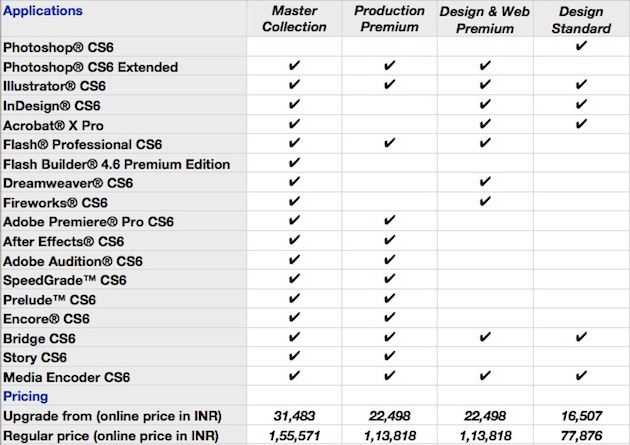Pluto's Moons Offer Clues to Alien Worlds
The "dwarf planet" is helping scientists figure out where to look for planets that circle two parent stars.
THE GIST
- Pluto and its big moon Charon can be used to model binary star systems.
- Pluto’s little moons stand in for extrasolar planets flying around two parent stars.
- New Horizons probe will test computer simulations predicting the moons’ locations and sizes.
Scientists wanting to learn more about how to find families
of planets are getting some lessons from Pluto and its partner moon
Charon.
The frozen duo, which orbit about 40 times as far away from the sun as Earth, balance a brood of at least three smaller moons, Nix, Hydra and a newly discovered body, designated P4, that flies between the two.
NEWS: Pluto at 82: A 'Chihuahua' Among Planets?
The whole system takes up less room than the span between Earth and our moon, providing a delicate orbital ballet that has implications for finding planets around dual-star systems beyond the solar system.
Following last year’s discovery of P4 in images taken by the Hubble Space Telescope, astronomers ran computer models to try to pin down the moons’ locations relative to each other and to Pluto and Charon, a proportionally large moon that has about 12 percent of Pluto’s mass.
“I was very surprised that they found a new moon in between the other two. It basically meant that it was getting kicked around by these other moon. I thought about what the effects of being kicked around like that and wondered what we could learn about them,” astronomer Andrew Youdin, with the Harvard-Smithsonian Center for Astrophysics told Discovery News.
“This is generally an issue with extrasolar planets,” he added. “One tries to study the stability of their orbits over time scales of billions of years.”
The research by Youdin and colleagues not only put some limits on how big Pluto’s moons are and where they are located. It also is helping scientists figure out where to look for planets that circle two parent stars. So far, astronomers using NASA’s planet-hunting Kepler space telescope, for example, have found systems with a single planet orbiting two stars, but not multiple planets, though that may be about to change.
“We’re learning from Pluto and how far away moons have to be for a given mass to last for millions or billions of years,” Youdin said.
The computer simulation will soon get a field test. NASA’s New Horizons probe is en route to the outer corner of the solar system to study Pluto, Charon and the small moons, as well as other objects in the Kuiper Belt region.
“We’ll know in a few years if we’re right or wrong,” Youdin said. “You can study the (moons’) motion through images by Hubble, but it is not as precise as what you can find by going there even on a single flyby.”
The geometry doesn’t leave much space for additional moons close to Pluto, though there could be more orbiting farther away.
NEWS: Hunting Pluto’s Dangerous Rings
Science aside, the prospect of even bits of moons flying near Pluto has the New Horizons team on high alert.
“We’re very concerned about the spacecraft being destroyed,” Alan Stern, New Horizons lead scientist, told Discovery News. “If we hit something even the size of a grain of rice, it would shred the spacecraft.”
Hubble will be tapped to search for potential crash zones until the spacecraft gets close enough to scan with its own cameras. The team also is developing an alternative route to fly by Pluto in case it finds danger looming on the primary path.
“We don’t to put something into the black widow’s web,” Stern said.
Youdin's research will appear in the Astrophysical Journal.
The frozen duo, which orbit about 40 times as far away from the sun as Earth, balance a brood of at least three smaller moons, Nix, Hydra and a newly discovered body, designated P4, that flies between the two.
NEWS: Pluto at 82: A 'Chihuahua' Among Planets?
The whole system takes up less room than the span between Earth and our moon, providing a delicate orbital ballet that has implications for finding planets around dual-star systems beyond the solar system.
Following last year’s discovery of P4 in images taken by the Hubble Space Telescope, astronomers ran computer models to try to pin down the moons’ locations relative to each other and to Pluto and Charon, a proportionally large moon that has about 12 percent of Pluto’s mass.
“I was very surprised that they found a new moon in between the other two. It basically meant that it was getting kicked around by these other moon. I thought about what the effects of being kicked around like that and wondered what we could learn about them,” astronomer Andrew Youdin, with the Harvard-Smithsonian Center for Astrophysics told Discovery News.
“This is generally an issue with extrasolar planets,” he added. “One tries to study the stability of their orbits over time scales of billions of years.”
The research by Youdin and colleagues not only put some limits on how big Pluto’s moons are and where they are located. It also is helping scientists figure out where to look for planets that circle two parent stars. So far, astronomers using NASA’s planet-hunting Kepler space telescope, for example, have found systems with a single planet orbiting two stars, but not multiple planets, though that may be about to change.
“We’re learning from Pluto and how far away moons have to be for a given mass to last for millions or billions of years,” Youdin said.
The computer simulation will soon get a field test. NASA’s New Horizons probe is en route to the outer corner of the solar system to study Pluto, Charon and the small moons, as well as other objects in the Kuiper Belt region.
“We’ll know in a few years if we’re right or wrong,” Youdin said. “You can study the (moons’) motion through images by Hubble, but it is not as precise as what you can find by going there even on a single flyby.”
The geometry doesn’t leave much space for additional moons close to Pluto, though there could be more orbiting farther away.
NEWS: Hunting Pluto’s Dangerous Rings
Science aside, the prospect of even bits of moons flying near Pluto has the New Horizons team on high alert.
“We’re very concerned about the spacecraft being destroyed,” Alan Stern, New Horizons lead scientist, told Discovery News. “If we hit something even the size of a grain of rice, it would shred the spacecraft.”
Hubble will be tapped to search for potential crash zones until the spacecraft gets close enough to scan with its own cameras. The team also is developing an alternative route to fly by Pluto in case it finds danger looming on the primary path.
“We don’t to put something into the black widow’s web,” Stern said.
Youdin's research will appear in the Astrophysical Journal.











 Washington: Shortage of spacecraft fuel that has cast doubts over NASA's future space missions may soon be prevented, as the US space agency is likely to receive new batches of plutonium-238 by as early as 2017.
Washington: Shortage of spacecraft fuel that has cast doubts over NASA's future space missions may soon be prevented, as the US space agency is likely to receive new batches of plutonium-238 by as early as 2017.